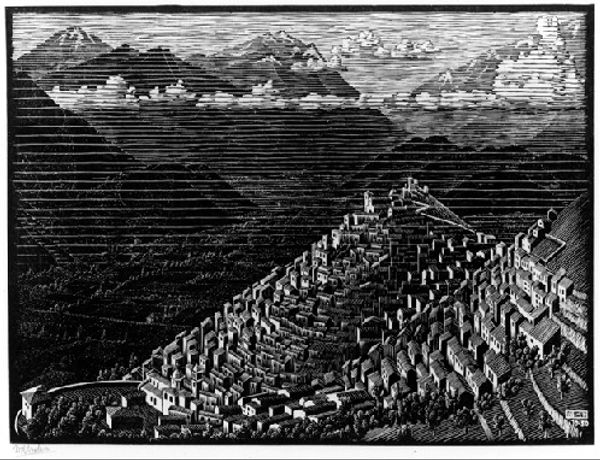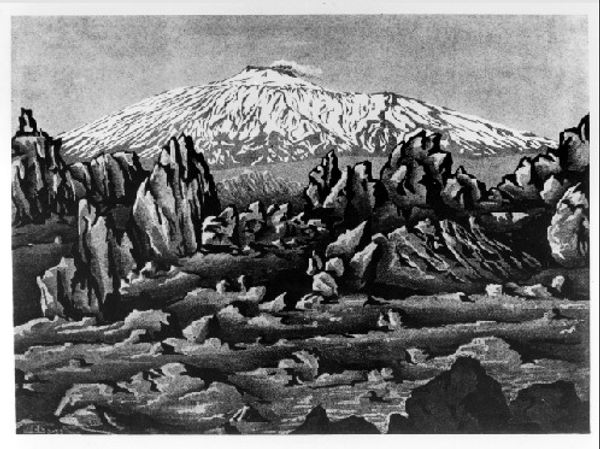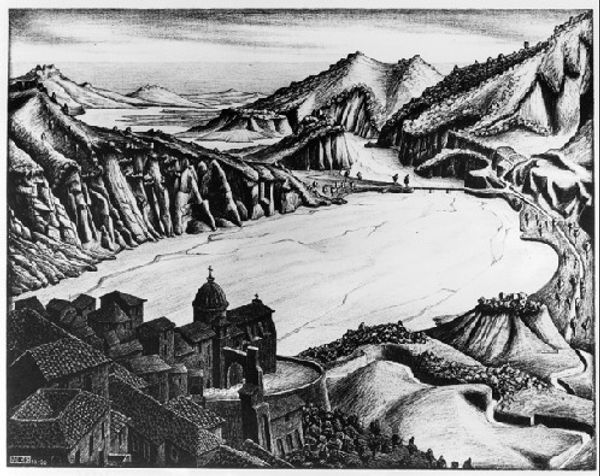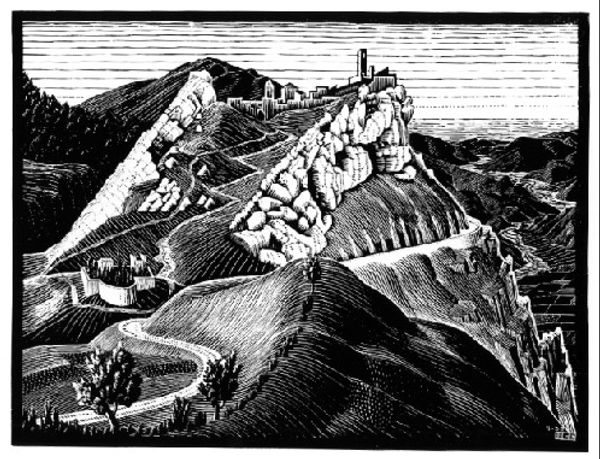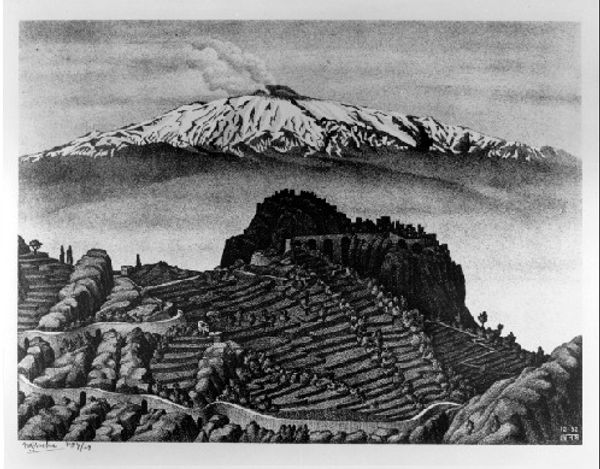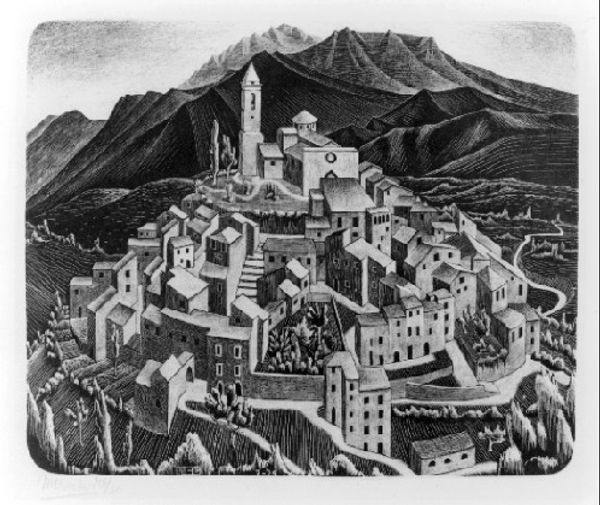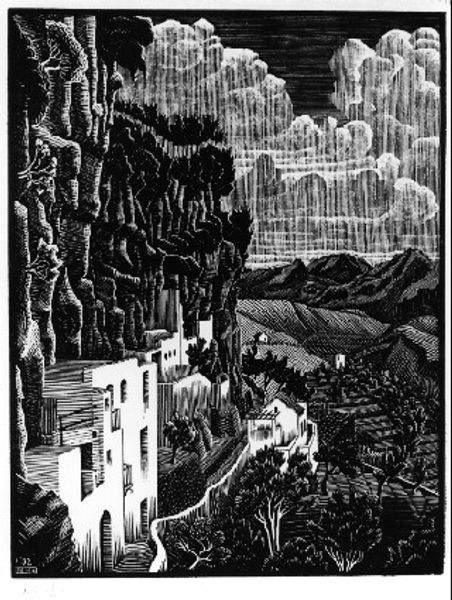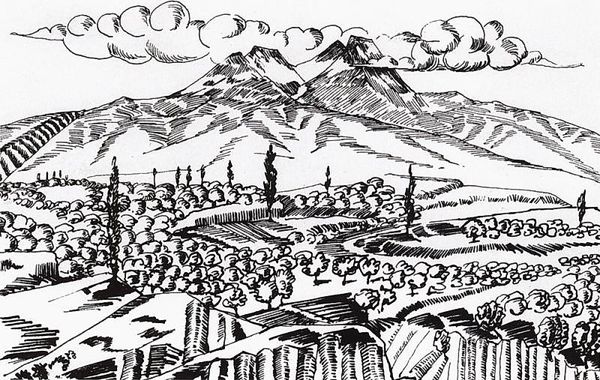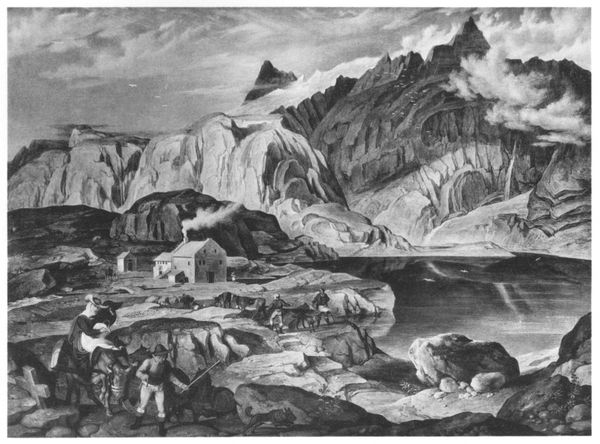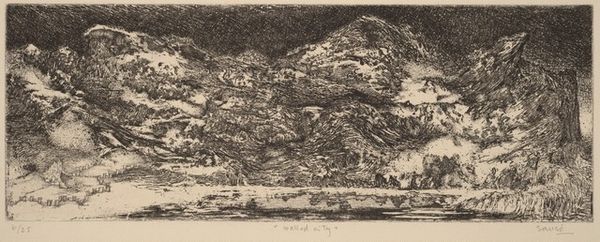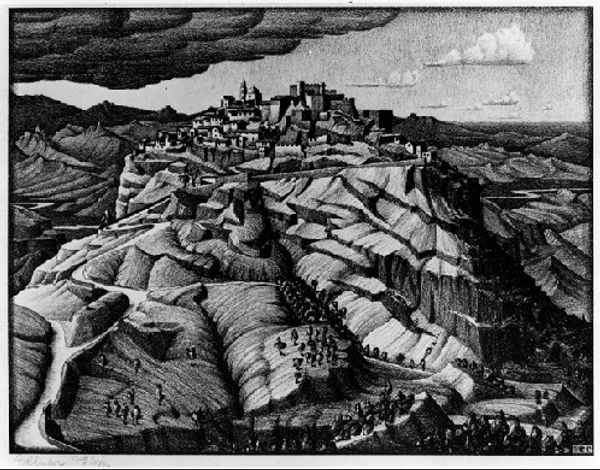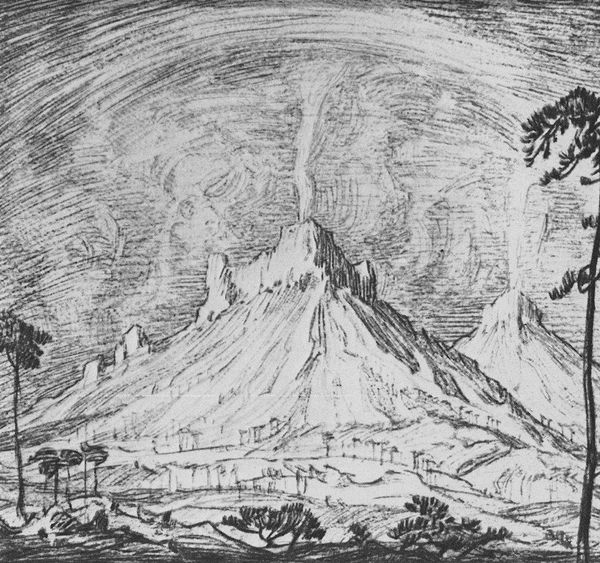
print, etching, photography, woodcut, graphite
# print
#
etching
#
landscape
#
photography
#
geometric
#
mountain
#
black and white
#
woodcut
#
graphite
#
cityscape
#
monochrome
Copyright: M.C. Escher,Fair Use
Curator: Here we have M.C. Escher’s “Cesarò and Mount Etna,” a 1933 print that immediately presents a striking contrast between the natural and the constructed environment. Editor: It looks like a dream, doesn’t it? Like some hidden village tucked into a mountain’s shadow. A landscape suspended in charcoal and mist. Curator: The medium itself, etching, plays a key role. Note how Escher employs it to delineate the crisp architecture against the rough, almost primal form of Mount Etna. The composition leads the eye upward. Editor: Exactly! My gaze flows naturally through the intricate patchwork of houses and then leaps over the water to the ethereal mountain. I feel a certain vertigo looking at the heights. It reminds me of childhood wonder and simultaneous unease with grandiose Nature. The way that horizon line meets sky feels so turbulent. Curator: Indeed. The dramatic perspective, combined with the sharp tonal contrasts achieved through the printmaking process, enhances the tension. Escher also incorporates geometric structures against the amorphous mass of the landscape, underscoring themes of order versus chaos, the man-made versus the organic. Note the sharp, controlled line work contrasted against the more fluid, gestural depiction of the landscape’s natural contours. Editor: Almost like a dialogue between the townspeople who created those buildings, and that colossal snow capped volcanic eruption lurking silently just beyond their horizon. Maybe even suggesting some subtle futility. How the hard lines we make vanish as we pan out, or fade over time. Does that read in there formally to you at all? Curator: Absolutely. By positioning the town as almost subservient to the mountain’s looming presence, Escher explores a hierarchy of forms. There's also the subtle gradation in shading, particularly noticeable across the sky and mountain—this provides volume but also speaks to light. The interplay of the linear village versus curved mountain is so essential to decode it visually and emotionally. Editor: I completely agree. I get this unsettlingly romantic mood just contemplating it. I might wander those black-and-white hills in my sleep. I hadn't even focused so deliberately on those sharp architectural geometries either, thanks. Curator: I am glad that helped illuminate your reverie. Hopefully our chat today has further elucidated your insights into Escher's dramatic landscape.
Comments
No comments
Be the first to comment and join the conversation on the ultimate creative platform.
